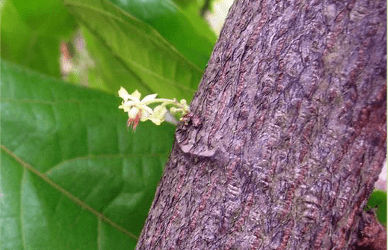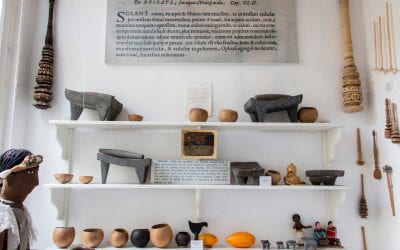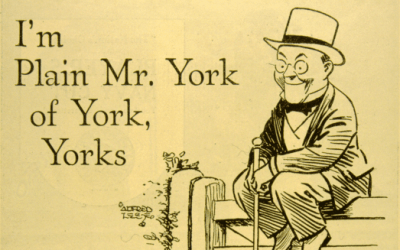A Food for the Goddesses
Cacao in the Lives of Ancient and Modern Maya Women
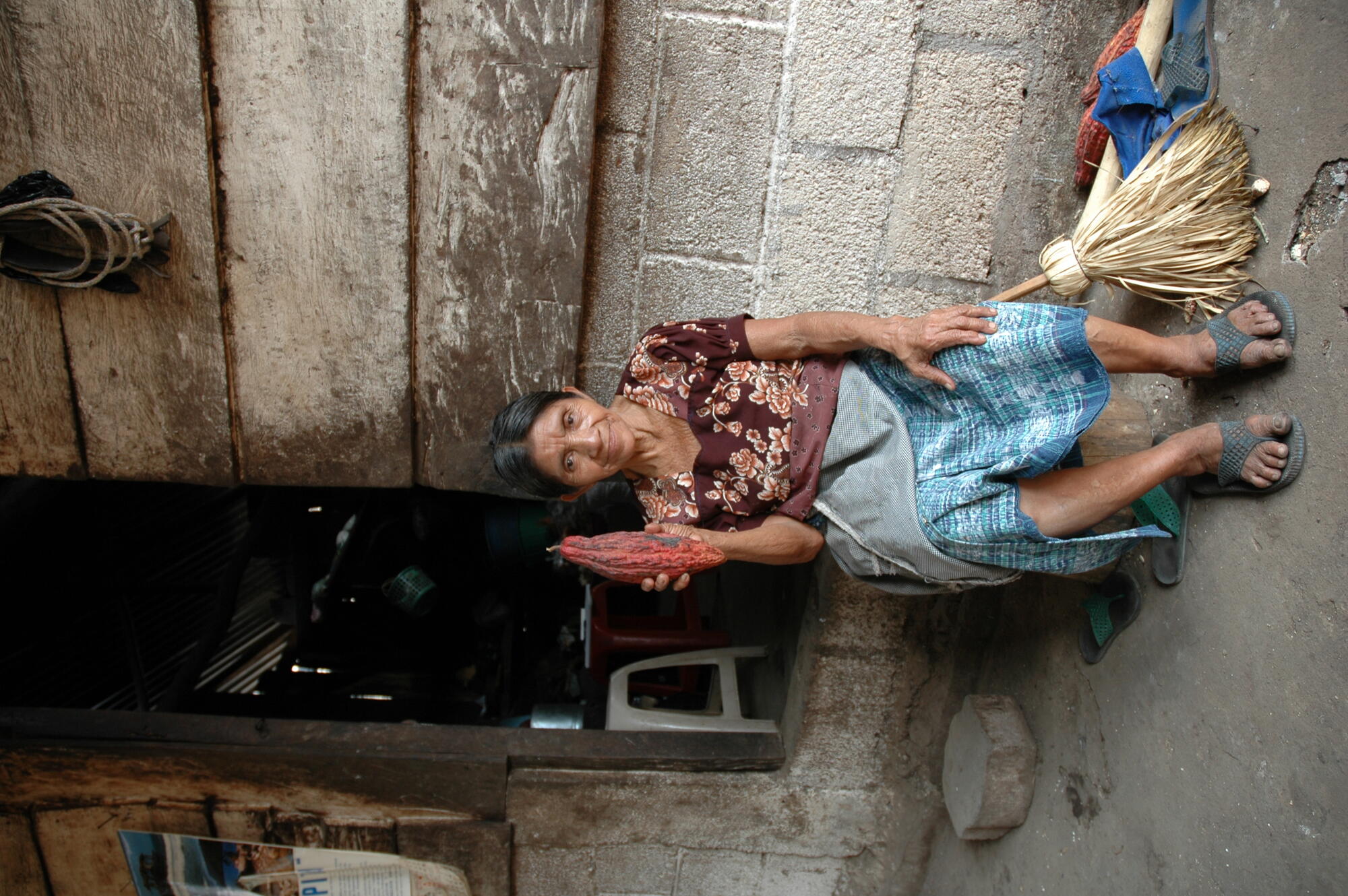
Figure 1. Doña Maria and a pod from her cacao orchard. Mazatenango, Guatemala. Photograph by Leslie Sheehan.
Maya women were the artisans who invented a panoply of ancient beverages and sauces containing cacao. This association between cacao and women extended to an association with certain Maya goddesses.
While originally introduced from South American, the use of cacao seeds (and likely its pulp) appears to have reached its greatest culinary heights among the Maya, who had a wide range of varieties carefully domesticated for specific fragrant essences. Women likely selected the most flavorful seeds to replant and thus slowly domesticated cacao in the direction of tastes identified with specific parts of the Maya world. The presence of stimulants—theobromine and caffeine—are what gave cacao its high value for Mesoamericans, who unlike South Americans, did not have access to a wider array of such substances.
Cacao processing and food production are rooted in thousands of years of female knowledge and traditions (Figure 1). Women make beverages of cacao pulp by taking the fresh seeds from their pod and beating them with a paddle (Figure 2). Sometimes this fruity drink of the white sweet cacao pulp is fermented into a caffeinated and alcoholic effervescent mixture. Cacao seeds are fermented in the pulp of the seeds regardless of whether a beverage is produced. Some women do this today in airy plastic baskets (Figure 3), while others dump the seeds into wooden bins.
In Kaqchikel and Quiche Maya communities of the Pacific Coast of Guatemala, women have their own traditions of fermentation passed down from their mothers. The duration of fermentation leads to fluctuations of flavor in cacao seeds between households.
Fall 2020, Volume XX, Number 1
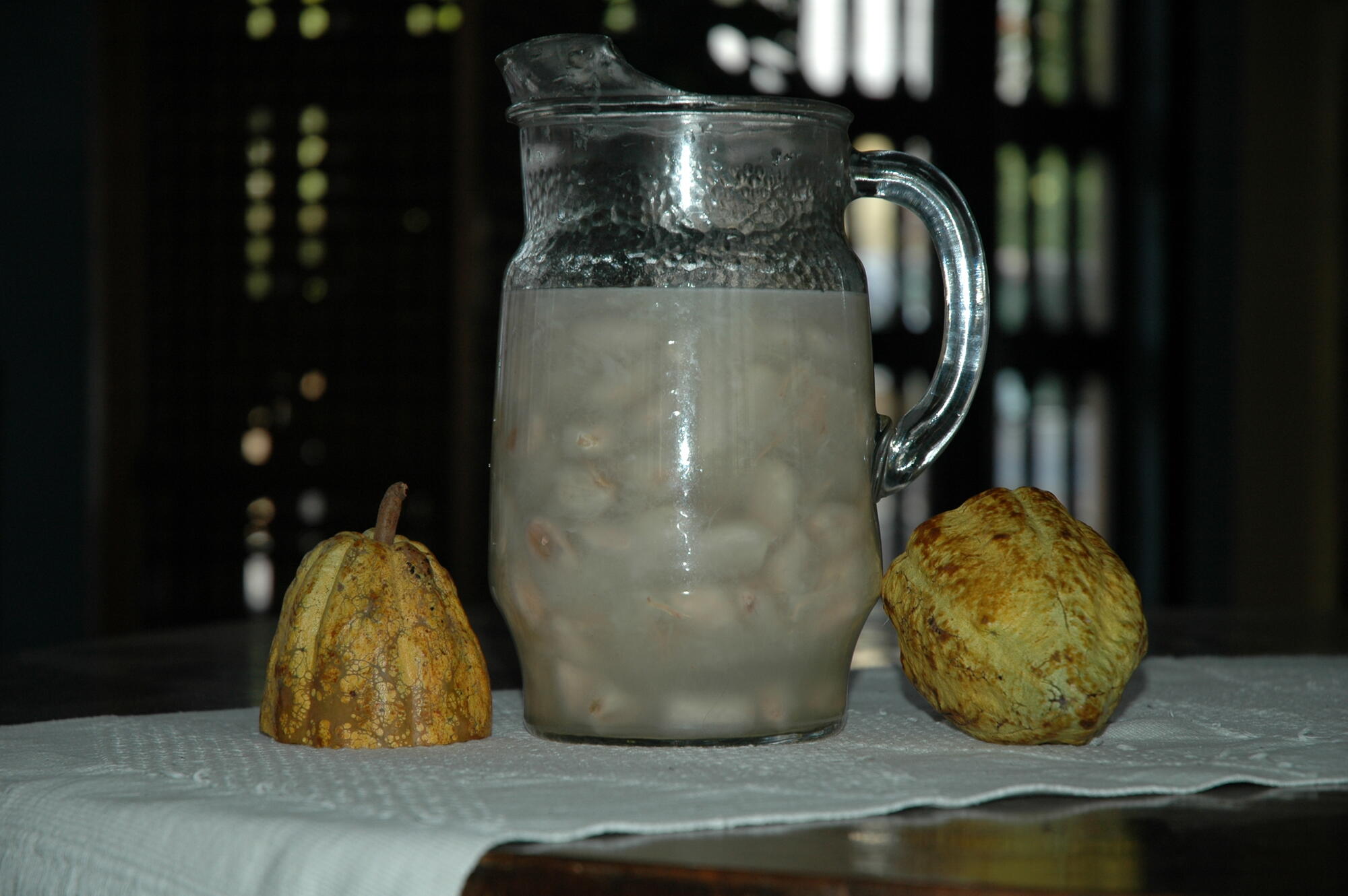
Figure 2. Drink of cacao pulp and water. The pulp-coated seeds are visible in the pitcher. Mazatenango, Guatemala. Photograph by Cameron L. McNeil.

Figure 3. Cacao seeds fermenting in a basket. San Antonio Suchitepequez, Guatemala. Photograph by Cameron L. McNeil.
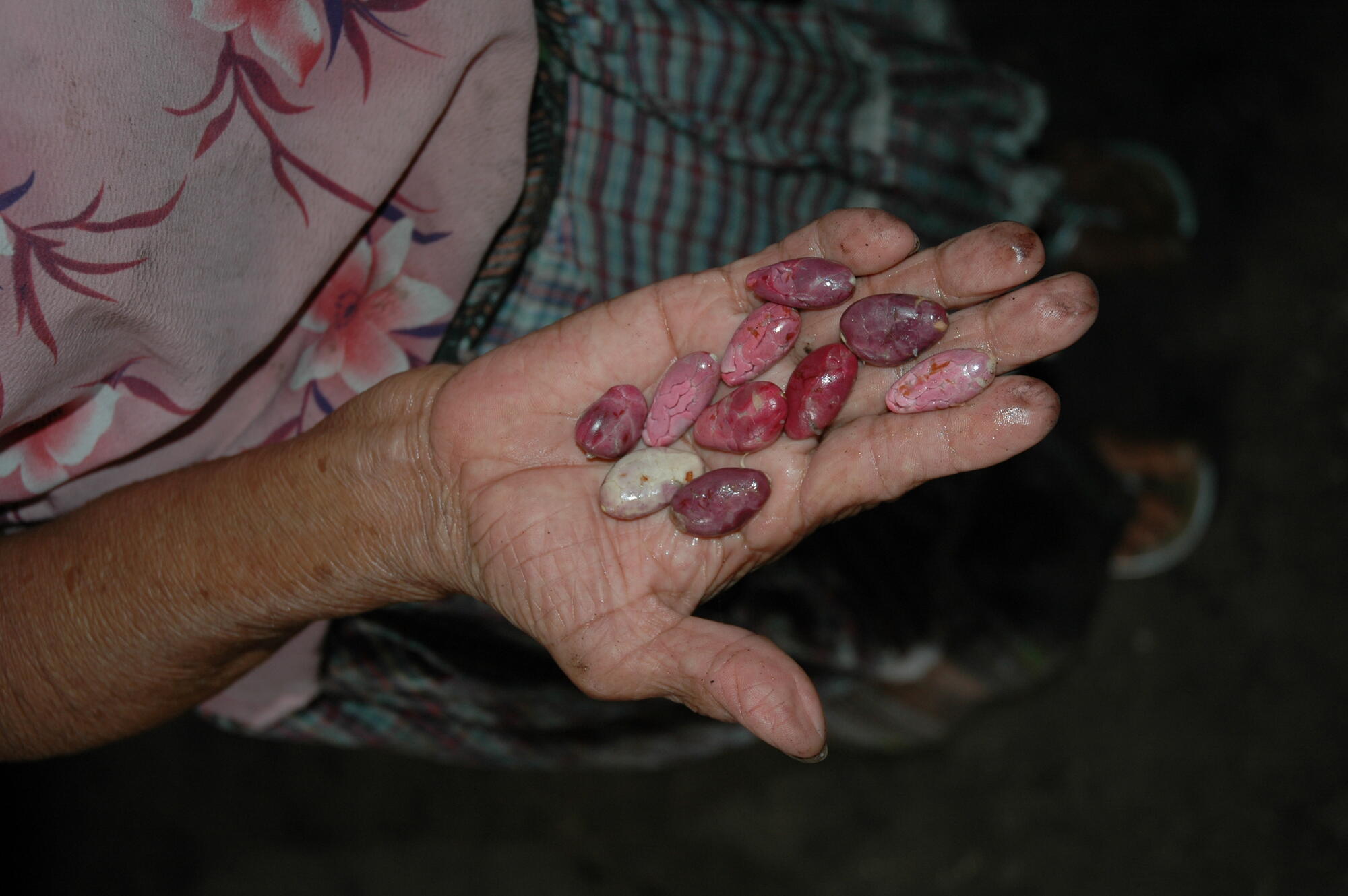
Figure 4. White, purple and pink cacao seeds. Photograph by Cameron L. McNeil.
There are more primary documents concerning cacao comestibles of the early colonial period from the Mexica Aztec of highland Mexico than from the Maya area. The Florentine Codex, produced in the 16th century under the direction of the Spanish friar Bernardino de Sahagún, details that the Mexica elites consumed a fermented beverage of cacao pulp as well as beverages of ground cacao seeds flavored with honey, vanilla, and aromatic or spicy flowers. Cacao drinks are described in The Florentine Codex as having different colors, possibly because the Mexica used the white cacao seeds for some of these beverages and purple seeds for others. Some may have also been prepared with the colorant annatto which would have given these drinks a reddish (or dark orange) color, as though blood was being consumed. Women captured for sacrifice by the Mexica were sometimes spared if they could prove a talent for the production of cacao comestibles.
Diego de Landa (1524-1579), a brutal Spanish priest, recorded the production of various savory drinks containing mixtures of cacao and maize, including a foaming cacao beverage which was made by Maya women pouring the beverage back and forth from container to container. Landa also relates that cacao was served by beautiful women at feasts, who then had to turn away until the drink was consumed.
Today cacao is also sold in open markets in a variety of forms which includes pinole, a ground mixture of cacao seeds with maize and spices such as cinnamon and vanilla, which can easily be converted into a drinkable atole through the addition of water. A particularly common meal (with pre-Columbian roots) for the Q’eqchi’ Maya in Guatemala is kaq’ ik, a turkey soup with cacao in the broth.

Figure 5. Whipping the cacao to bring up the fat. Photograph by Cameron L. McNeil.
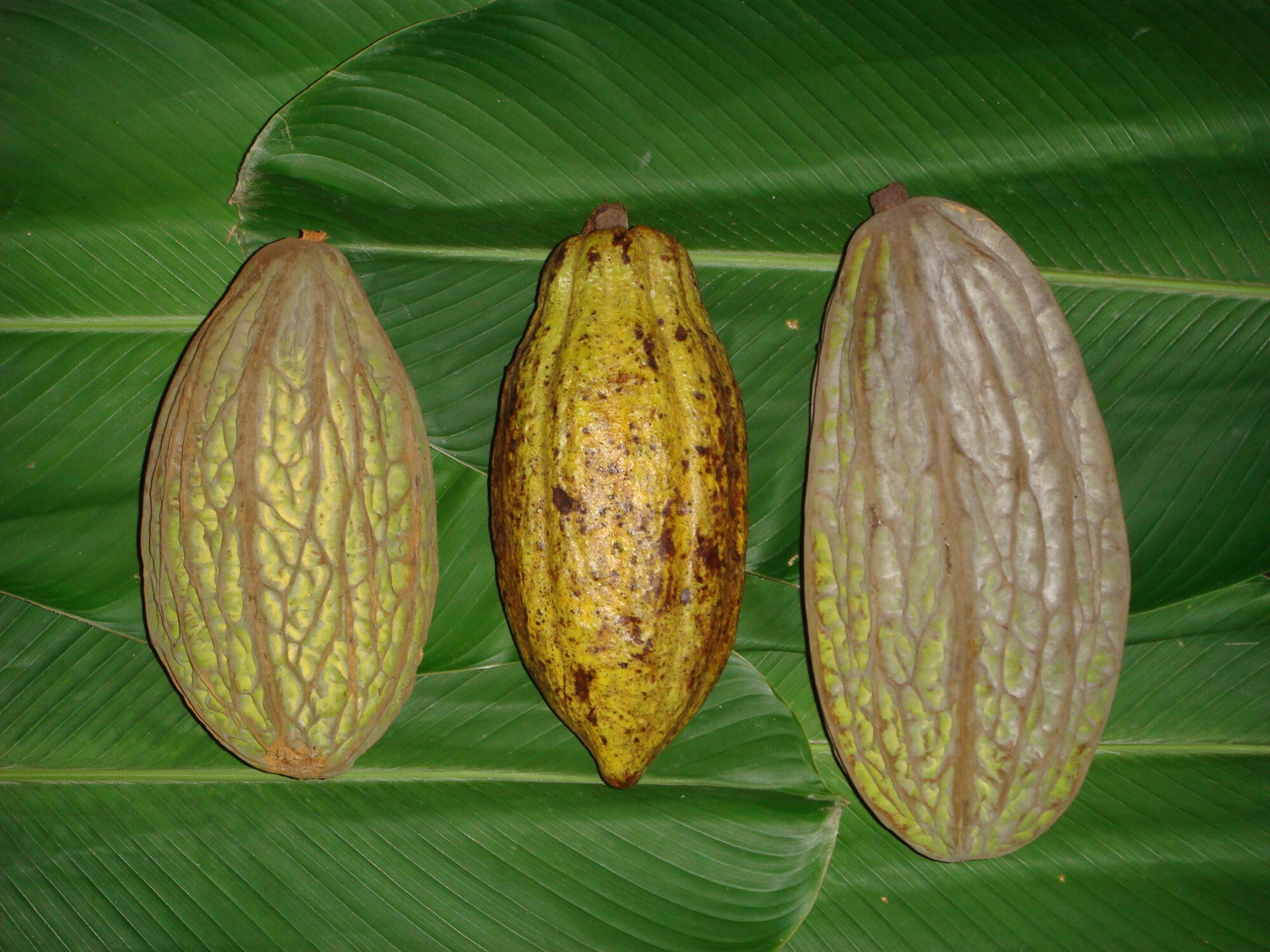
Figure 6. Two pods of pataxte are on either side of a cacao pod. Photograph by Cameron L. McNeil.
Until recently, little was known about the dietary choices of the Classic period (CE 250-900) Maya, who occupied an area including Guatemala, Honduras, Belize, El Salvador, and southern Mexico including the Yucatán. In the 1980s, epigrapher David Stuart identified the Classic-period glyph for cacao in a vessel inscription that is termed a Dedicatory Formula. Such inscriptions include the name of the owner of the vessel and sometimes the contents. These containers are often cylindrical and sometimes have tripod feet, but there are many exceptions. Researchers’ ability to decipher the foods the Maya were consuming has revealed more every year concerning the comestible artistry of ancient Maya women. In 2009, epigrapher Dmitri Beliaev and colleagues analyzed inscriptions on vessels echoing the descriptions first found by David Stuart, but also added a new one, “cherry cacao.”
Around the same time that Stuart identified the Classic-period cacao glyph, W. Jeffrey Hurst, a chemist at Hershey Laboratories, developed a method to detect the presence of theobromine and caffeine (indicators of cacao presence) in ancient vessels allowing scholars to learn more about the range of foods produced by ancient women, and to move beyond a sole dependence on hieroglyphic inscriptions. However, this method of chemical analysis cannot detect the difference between the use of the pulp and the use of the seeds, which have the same chemical properties. In addition, cacao has a cousin—Theobroma bicolor (pataxte)—which also contains theobromine but has little to no caffeine in its mature seeds (Figure 7).
Copan did not produce inscribed vessels until the Late Classic, so chemical analysis is the sole way to determine the presence of cacao in earlier contexts. Several Copan vessels were sampled from excavations directed by Robert J. Sharer from the University of Pennsylvania Museum. These containers were found in three Early Classic royal tombs (Hunal, Margarita, and Sub-Jaguar) and one offering. This analysis expanded what was known about pre-Columbian culinary cacao traditions. Not only were some of the standard cylinder vessels found to have cacao, but evidence of cacao was found in less expected containers.
A tamale platter held cacao residue suggesting that Maya women made tamales with a cacao sauce (or mole), inside them, or that there was a sauce of cacao placed over the tamales. A large finely-made vessel in the form of a deer contained cacao, and inside the vessel was a convex Spondylus shell in the shape of a hand, with a chocolate stain in its palm (Figure 8a and 8b). Generally, an artifact like the shell hand would be assumed to have been a pendant, but its placement embedded in the chocolatey residue of a vessel placed by itself beneath a tomb slab suggests the shell was an implement for serving cacao. Since the scoop was likely too delicate to have been used with seeds, the vessel may have held a powdered cacao mixture such as pinole.
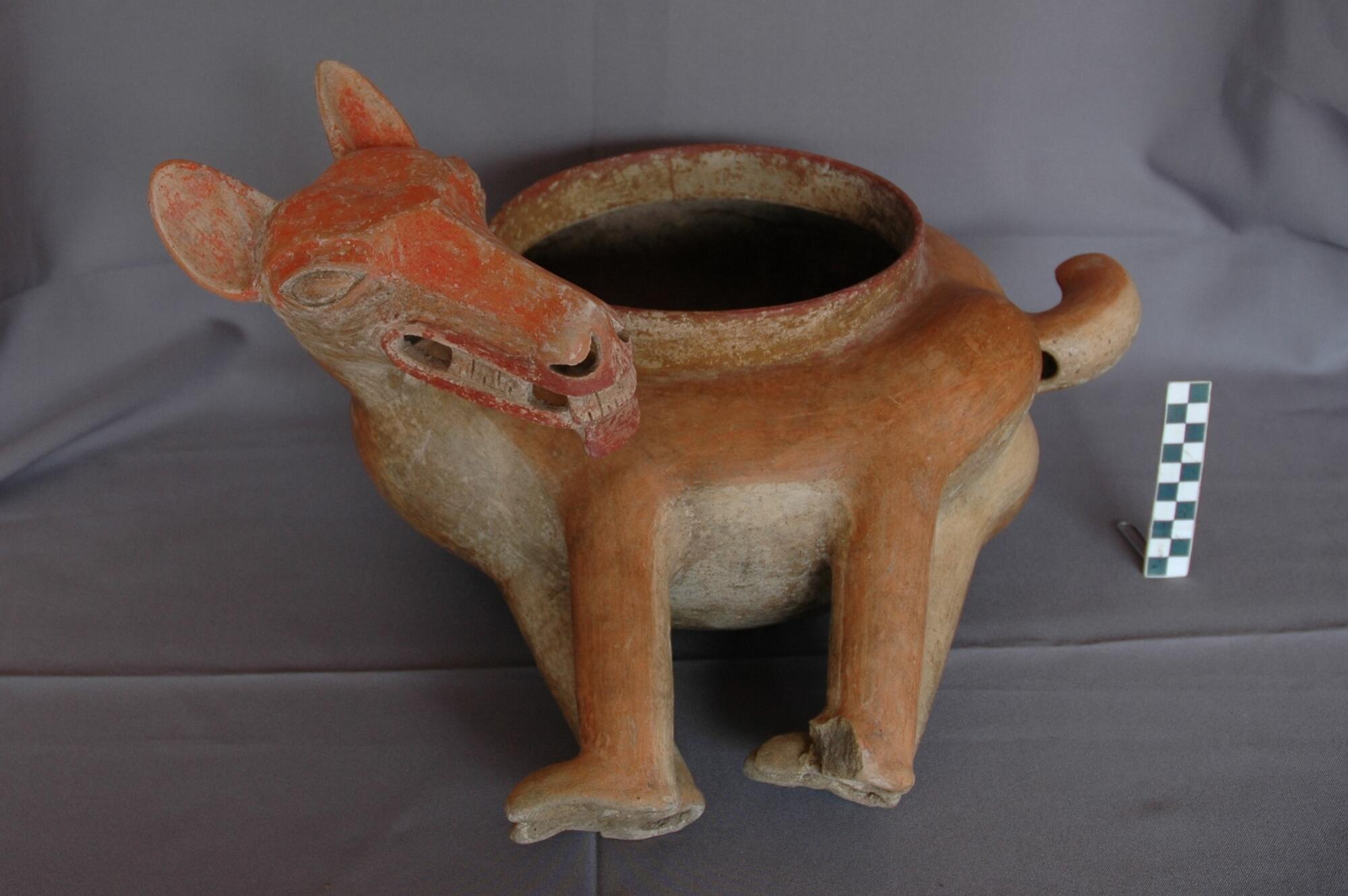
Figures 7a. Deer vessel from the Hunal Tomb. Excavated by the Early Copan Acropolis Program of the University of Pennsylvania Museum. Collection of the Instituto Hondureno de Antropologia e Historia. Photographs by Cameron L. McNeil.

7b. Shell scoop recovered from inside the vessel. Excavated by the Early Copan Acropolis Program of the University of Pennsylvania Museum. Collection of the Instituto Hondureno de Antropologia e Historia. Photographs by Cameron L. McNeil.
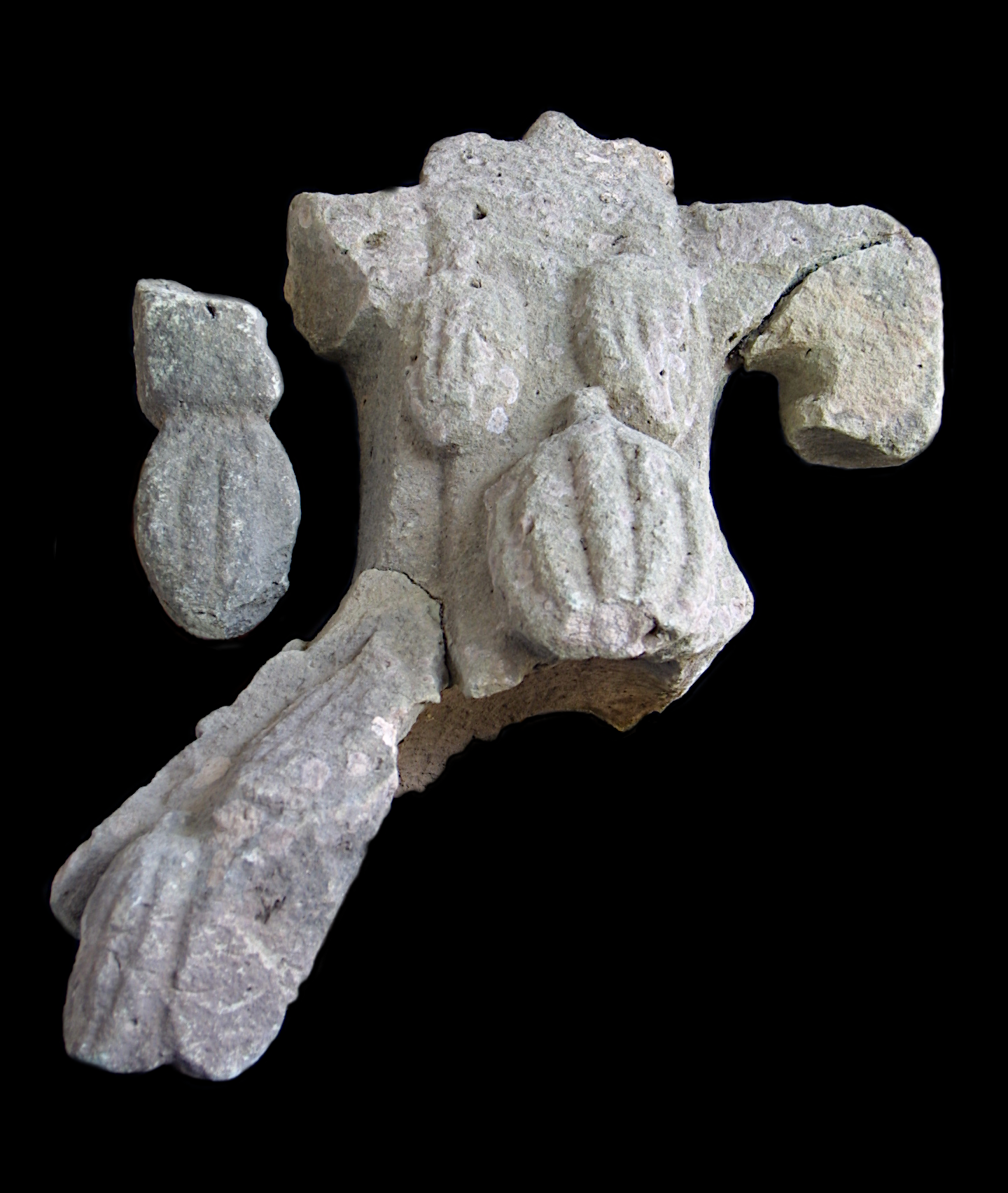
Figure 8. The lid of a large stone censer with a womanly form. Copan, Honduras. Collection of the Instituto Hondureno de Antropologia e Historia. Photograph by Edgar Zelaya.
The most peculiar discovery—found in a queen’s tomb—was a small bowl containing tiny river fish, which turned out to have been accompanied by cacao. Perhaps a sauce produced of the fruity pulp of the cacao pod, rather than from the seeds, accompanied the fish. The most well-known vessel found in the same tomb bears the image of Copan’s first king looking out of his burning funerary temple. The surviving residue, which contained cacao, was reduced down to a thin layer in the bottom of the covered serving vessel. This vessel likely held one of the foamy beverages prized by the Maya. Women created these by pouring the beverage back and forth between vessels.
Outside the queen’s tomb was an offering that included a vessel with turkey bones and cacao, or pataxte. It is not possible to determine whether this vessel held an actual meal, or was simply a vessel for valued foods, but in intent at least, it recalls kaq’ ik.
While cacao was associated with the merchant god Ek Chuah, and as iconography expert Simon Martin has so aptly proved, the Maize God, throughout the Maya area ties between this tree, women, and goddesses are also common. Cacao’s associations with the feminine are imbedded in Maya concepts of this gender. Ethnopharmacologists Johanna Kufer and Michael Heinrich tell us, cacao grows in the shade and is associated with these darker areas as women are, whereas males are associated with the sun and the sky. Cacao’s association with the feminine extends to the moon, and female water deities.
Vestiges of this association between women and cacao are found scattered in sculptures of stone and ceramic in the Maya world. At Copan, one large saklaktun (stone cache vessel) takes the form of a woman’s body pregnant with cacao (Figure 10). While specific queens, goddesses, or commoner women are not depicted in the region’s monumental art, this sculpture dramatically expresses fertility by taking on attributes of the female sex. Cacao pods hang in place of breasts and a large cacao pod rests over the stomach area. Below this striking feature the sculpture is further covered in cacao pods as though clothed in a skirt of fertility.

Figure 9. Lady Sak’ K’uk’ reborn to new life as a cacao tree. Late Classic period. Palenque, Mexico. Drawing by Mauricio Díaz García.
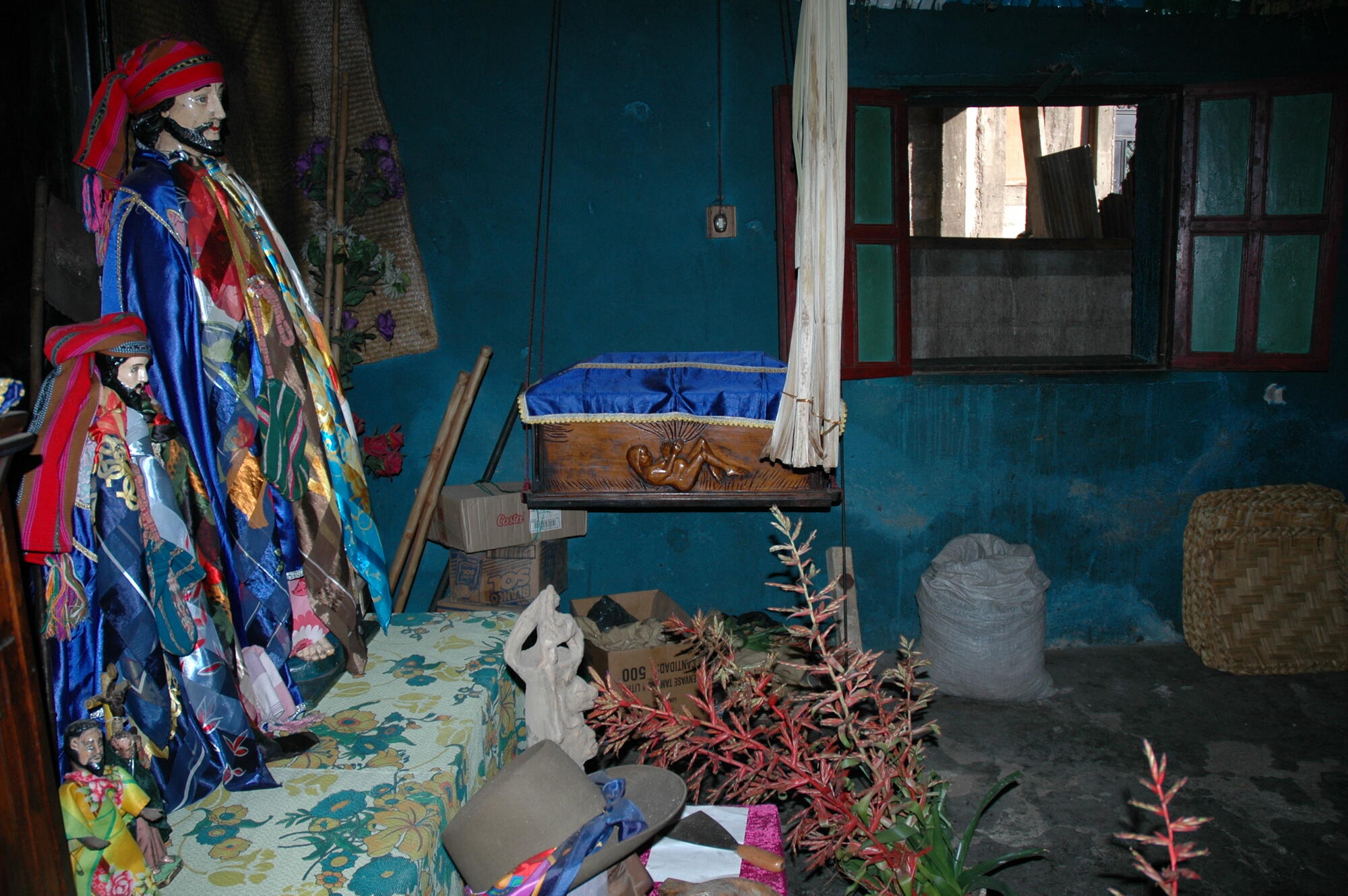
Figure 10. A pregnant woman adorns a wooden box containing a sacred bundle and cacao seeds in the Confraternity San Juan. Santiago Atitlán, Guatemala. Photograph by Cameron L. McNeil.
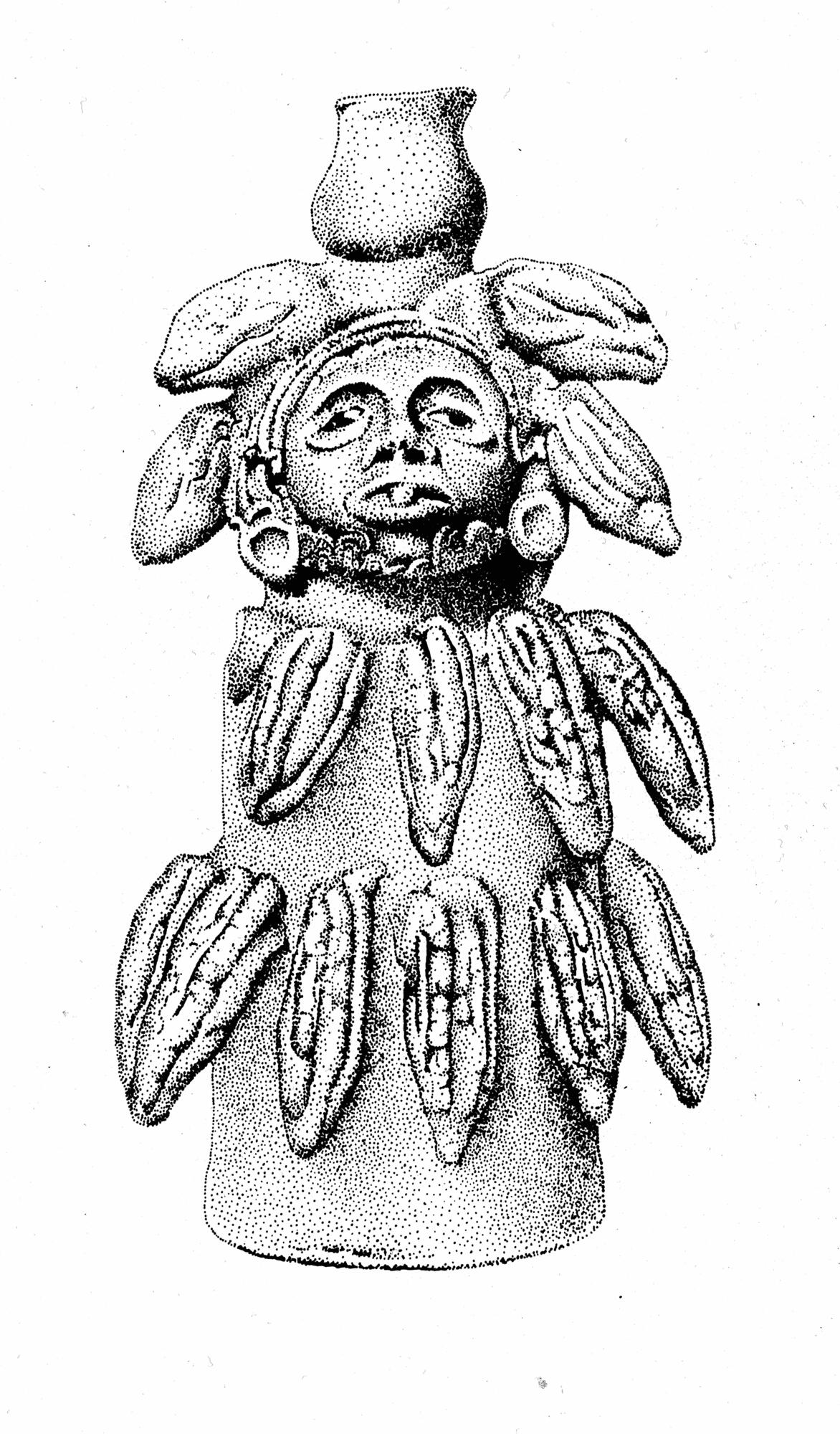
Figure 11. Figurine in the form of a woman, or goddess, with cacao pods growing from her body. Late Classic. Pacific Coast, Guatemala. Collection of the Museo Popol Vuh. Universidad Francisco Marroquín. Drawing by Eliud Guerra.
At the site of Palenque in Mexico the walls of the sarcophagus of the great Classic period king Pakal are carved with images of his ancestors reborn to a new life as trees, a common belief among Maya peoples. Pakal’s mother is represented twice, each time as a cacao tree (Figure 10). In a cofradía house in Santiago Atitlan, where syncretic Maya-Christian rituals occur, a wooden box associated with women hangs from the ceiling. This box contains cacao seeds that can cure women’s illnesses. On its front is carved a pregnant woman (Figure 11). Anthropologist Allen Christensen of Brigham Young University notes that the box’s association with the moon is signified by the fact that it hangs from the ceiling and does not rest on four legs like the box associated with men. The male-associated box across the room contains the seeds of cacao’s cousin, the pataxte tree, and bears both maize and pataxte depictions on its surface.
In coastal and highland Guatemala, figurines and censer lids have been found adorned with representations of goddesses with cacao pods growing from their bodies (Figure 12), as has a censer lid of a female figure, possibly a goddess, offering two cacao pods in a vessel and covered in lifelike cacao seeds. Archaeologist Oswaldo Chinchilla of Yale University reviewed a number of ceramic sculptures with females and cacao. In one example, a butterfly representing a dead warrior rises out of a cacao pod to be carried away by a goddess.
Along the Pacific coast of Guatemala, where sculptures of women sprouting cacao pods were once produced, traditional cacao beverage traditions are slowly being lost as older generations of women die. Personal cacaotales (cacao orchards) have become increasingly difficult to cultivate because the trees produce fewer pods. Nearby large multinational sugarcane plantations are regularly crop-dusting and the pesticides sent down through the air are the likely culprit in the death of the tiny insects crucial for cacao flower pollination. Not understanding the problem, orchard owners dress the cacao trees in lingerie to embarrass them into producing more pods, but increasingly give up and sell the land for conversion into houses. Dona Maria, a cacao grower who lives in one of these communities, mourns the passing of traditions and explains that girls do not want to grind cacao and maize anymore. This younger generation of Maya women “just wants to study and talk on their phones.”
Cameron L. McNeil is an associate professor of Anthropology at Lehman College, and the Graduate Center, CUNY. She edited the book Chocolate in Mesoamerica: A Cultural History of Cacao, and has conducted research in Mesoamerica for over 20 years.
Related Articles
Discovering the Taste of Molecules in Chocolate
English + Español
I’m a chemist. And you generally don’t think about chemistry when you have a delicious cup of chocolate. But I have studied the chemical composition of chocolate for 20 years and I would like to share what I have learned with you. For more than three decades…
Keeping the Heritage through a Museum
English + Español
As an architect, I’ve been fascinated by museums and how the design of spaces can influence the experience of the visitor and the meaning of the objects within. Museums are not only repositories of valuable pieces preserved for posterity, but cultural elements…
Gendered Chocolate Mythologies
In 1925, the cartoon figure of a portly white gentleman was created to advertise chocolates produced by the English firm of Rowntree & Co, which by this time operated a large factory on the outskirts of the city of York. Given the name “Plain Mr. York, of…

